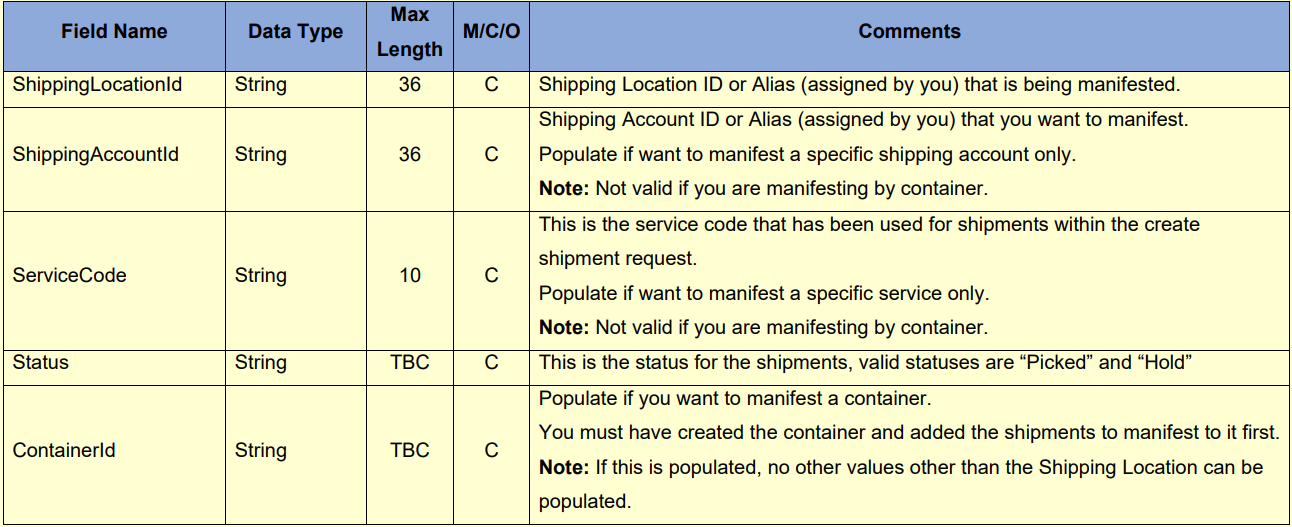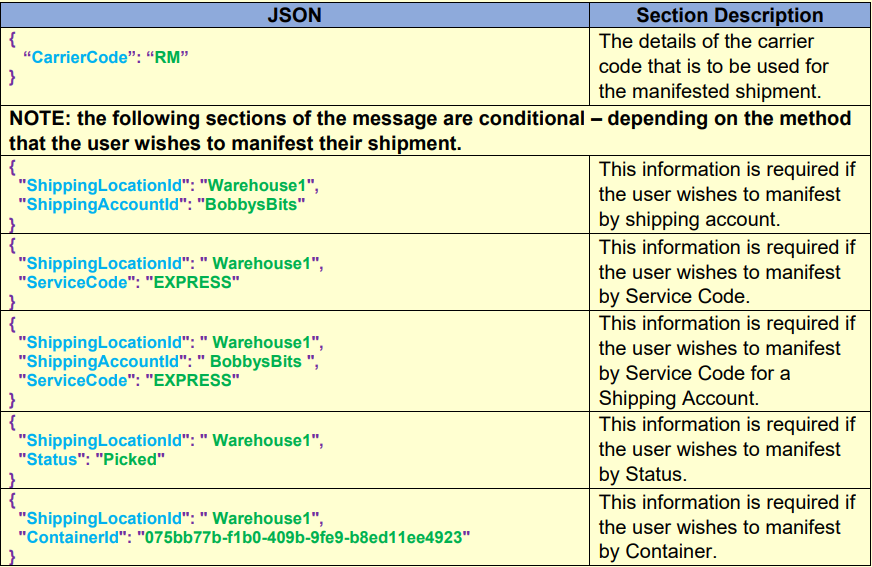JSON Request Structure and Format
This section details the carrier code for each of the shipments that are to be included in the manifest.
Within the Carrier Codes part of the message, the user needs to send the carrier code that is to be used for the manifest (currently the only valid option is “RMG”). This then tells the receiving system that it is going to receive details of a carrier for the manifest. The system can thereby validate the data contained in this section accordingly.
The fields, data types and conditions that will be validated for in the Carrier Codes section as detailed below.

This section details the shippers address and contact details.
Within the Manifest Shipment element of the message, the user needs to send the relevant values depending on the method by which they wish to manifest. This then tells the receiving system that it is going to receive details of a manifest to be printed and validates the data contained in this section accordingly.
The fields, data types and conditions that will be validated for in the Manifest Shipment Request section as detailed below.

Example Request JSON
Below is a Manifest Shipment Request JSON example, this has been placed into a table, to better separate and distinguish the different sections detailed above.

For further details on the standard JSON message formatting, please refer to the Shipping API JSON Formatting Rules.
To successfully process a Manifest shipment request, the user must have a valid connection, that has been verified by use of a system generated Authentication Token. For further details on system authentication, please refer to the Authentication guide.
Updated 9 months ago